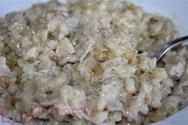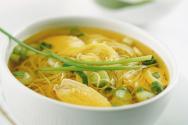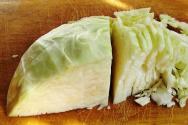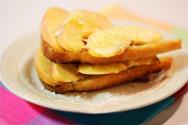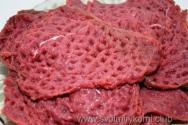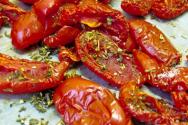6292 93 rice groats technical specifications.
6292 93 rice groats technical specifications.
Rice groats. Specifications
GOST 6292-93
Group H34
RICE GREATS
Specifications
Rice groats. Specifications
MKS 67.060
OKP 92 9410
Date of introduction 1995-01-01
Preface
1 DEVELOPED by the Russian Federation
INTRODUCED by the technical secretariat of the Interstate Council for Standardization, Metrology and Certification
2 ADOPTED by the Interstate Council for Standardization, Metrology and Certification (Protocol No. 4 of October 21, 1993) | The following voted for adoption: |
State name | Name of the national standardization body |
Republic of Armenia | Armgosstandard |
Republic of Belarus | State Standard of Belarus |
The Republic of Kazakhstan | Gosstandart of the Republic of Kazakhstan |
The Republic of Moldova | Moldovastandard |
Russian Federation | Gosstandart of Russia |
Turkmenistan | Main State Inspectorate of Turkmenistan |
The Republic of Uzbekistan | Uzgosstandart |
Ukraine State Standard of Ukraine
3 IN REPLACE
GOST 6292-70
4th EDITION (February 2010) with Amendment (IUS 5-2008)
INFORMATION DATA |
|
1.1, 1.2, 1.5 |
|
REFERENCE REGULATIVE AND TECHNICAL DOCUMENTS Item number.
This standard applies to rice grains intended for food purposes and food production
baby food
Mandatory requirements for rice cereals, aimed at ensuring safety for the life and health of the population and environmental protection, are set out in Table 2 (indicators: yellowed kernels, spoiled kernels in the composition of weeds, mineral impurities, pest infestation, dead pests, metallomagnetic impurities) , Table 3 (all indicators except for the “humidity” indicator), 1.6.
1 TECHNICAL REQUIREMENTS 1Technical requirements.
1.1 Rice cereals must be produced from rice that meets the requirements 1Technical requirements.
GOST 6293
1.2 Polished rice groats of the highest and first grades, used for the production of baby food products, are produced from rice grown in fields without the use of pesticides and meeting the requirements
1.3 Rice cereals are divided into types and varieties shown in Table 1. | Table 1 | Type of cereal |
Cereal variety | Characteristics of cereals and processing method | Polished rice |
Third | A product obtained by grinding hulled rice grains of type III or IV, consisting of kernels with a rough surface, from which flower films, fruit and seed coats, most of the aleurone layer and embryo have been removed, and having a content of colored kernels not exceeding the standards established by this standard. As well as a product obtained by grinding hulled rice grains of type I or II, which does not pass the quality of the Extra grade |
|
Rice, crushed, polished | Not divided into varieties | A product of processing rice into cereals, consisting of crushed, additionally polished rice kernels of types I, II, III, IV, less than a whole kernel in size, which have not passed through a sieve with holes with a diameter of 1.5 mm |
1.4 Rice cereals must comply with the requirements and standards specified in Table 2.
table 2
Indicator name | Characteristics and standards for rice cereal |
|||||
Extra varieties | premium | first class | second class | third class | crushed |
|
White with various shades |
||||||
Characteristic of rice grains without foreign odors, not musty, not moldy |
||||||
Characteristic of rice grains without foreign tastes, not sour, not bitter |
||||||
Number of cores having a ratio of core length to width of 2, 3 or more, %, not less | ||||||
Humidity, %, no more | ||||||
Benign core, %, not less | ||||||
including: | ||||||
crushed rice,%, no more | ||||||
yellowed rice kernels,%, no more | Not allowed | |||||
chalk rice kernels,%, no more | ||||||
kernels with red stripes,%, no more | Not allowed | Not limited |
||||
red kernels, %, no more | Not allowed | Not allowed | Not allowed | Not allowed | Not limited |
|
glutinous kernels,%, no more | ||||||
hulled millet grains, %, no more | ||||||
Unhulled rice grains, %, no more | Not allowed | Not allowed | ||||
Weed impurity, %, no more | ||||||
including: | ||||||
mineral impurity | ||||||
organic impurity | Not allowed | Not allowed | ||||
Pest infestation of grain stocks | Not allowed |
|||||
dead beetles, spec. 1 kg, no more | Not allowed |
|||||
Metallomagnetic impurity, mg per 1 kg, no more | ||||||
Note. Moisture content of rice grains for early delivery and for storage beyond the established time limits GOST 26791*, should be no more than 14.0%. |
||||||
________________
GOST R 51074-2003.
The size of individual particles of a metallomagnetic impurity in the largest linear dimension should not exceed 0.3 mm, and the mass of its individual particles should not exceed 0.4 mg.
(Amendment).
1.5 Rice cereals of the highest and first grades, produced from rice according to 1Technical requirements grown in fields without the use of pesticides, and intended for the production of baby food products, must comply with the requirements and standards given in Table 3.
Table 3
Indicator name | |
Humidity, %, no more | |
Damaged kernels, %, no more | Not allowed |
Acidity, degrees, no more | |
Contamination of grain stocks with dead pests: | |
dead beetles, spec. 1 kg no more | Not allowed |
Mesophilic aerobic and facultative anaerobic microorganisms, cells in 1 g, no more | |
Molds, cells 1 g, no more | |
Bacteria of the Escherichia coli group, cells in 1 g, no more | Not allowed |
For other quality indicators, rice grains intended for the production of baby food products must comply with the requirements and standards given in Table 2 for polished rice grains of the highest and first grades.
1.6 The content of toxic elements, mycotoxins and pesticides in rice cereals should not exceed the permissible levels established by Medical and biological requirements and sanitary standards for the quality of food raw materials and food products* Ministry of Health of the USSR N 5061-89 dated 08/01/89.
________________
*On the territory of the Russian Federation they operate SanPiN 2.3.2.1078-2001.
1.7 Characteristics of rice cereal quality indicators are given in Table 4.
Table 4
Indicator name | Characteristics of the indicator |
Broken rice | Broken rice kernel smaller than a whole kernel that has not passed through a 1.5 mm sieve |
Yellowed rice kernels | Processed rice grains, whole and broken, with yellow endosperm of varying intensities |
Chalky rice kernels | Processed grains of rice, whole and broken, of which or more the surface has an opaque chalk-like appearance |
Kernels with red stripes | Processed grains of rice, whole or broken, which have visible red stripes, the total length of which is at least one stripe equal to the length of the kernel, and the surface area occupied by these stripes is less than the total surface area of the kernel |
Red kernels | Processed grains of rice, whole and broken, of which the general surface is red in color |
Glutinous nuclei | Processed rice grains of glutinous varieties, uniform in color, dense structure, milky glass consistency, stearin-shaped in cross-section without powdery or glassy inclusions |
Hulled millet grains | Weed seeds - millet (kurmak, sulufa) without flower films |
Unhusked rice grains | Rice grains in flower films |
Weed impurity | All material that is not processed rice grains (mineral impurities, organic impurities, weed seeds), as well as spoiled kernels |
Mineral impurity | Sand, pebbles, particles of slag, ore, emery, lumps of earth |
Organic impurity | Glumes, flower films, parts of stems, awns, leaves, empty spikelets |
Weed seeds | Seeds of all wild and cultivated plants, including millet |
Spoiled rice kernels | Processed rice grains with apparently spoiled endosperm, light brown to black in color |
Entire passage through a sieve with 1.5 mm diameter holes |
2 ACCEPTANCE RULES
2.1 Acceptance rules - according to GOST 26312.1.
2.2 The quality document for a batch of premium and first grade rice cereals used for baby food additionally indicates that this batch of cereals is produced from rice grown in fields without the use of pesticides and is intended for the production of baby food products.
2.3 Control over the residual amount of pesticides, the content of toxic elements and mycotoxins is carried out in accordance with the procedure established by the product manufacturer in agreement with the state sanitary inspection authorities and guaranteeing product safety. GOST 26312.3 GOST 26933.
3.13 Determination of zinc - by GOST 26934.
3.14 Determination of the percentage of kernels having the ratio of kernel length to width established by the standard.
3.14.1 Basic concepts and essence of the method
Kernel length is the straight line distance between the outermost ends of a milled grain of rice.
Kernel width is the transverse distance at the widest part of the milled rice grain.
The essence of the method is to measure the length and width of 20 randomly selected whole kernels using a micrometer, calculate the ratio of kernel length to width for each of the 20 kernels, and determine the percentage of kernels that have the standard kernel length to width ratio.
3.14.2 Hardware
To carry out the test use:
micrometers by GOST 6507 or GOST 11098 ;
tweezers.
3.14.3 Test performance
3.14.3.1 Determination is carried out in a sample of cereal weighing 25 g, taken from an average sample and freed from impurities.
A portion of the cereal is distributed over the table surface in an even layer in the form of a square, which is divided diagonally into four triangles. Five whole kernels are randomly counted from each triangle - 20 kernels in total.
3.14.3.2 Change in the length and width of single kernels.
Each of the 20 nuclei selected for testing is taken with tweezers and clamped first along the axis of the largest kernel size (length), and then along the axis of the average kernel size (width) between the pin and the base of the micrometer. A micrometer is used to record the length and width of each core with an accuracy of hundredths of a mm.
The ratio of core length to width is determined by dividing the core length by the core width.
Calculations are carried out to the second decimal place, followed by rounding to the first decimal place.
where 20 is the number of nuclei taken for analysis;
The number of cores having the core length to width ratio established by the standard.
The result is given to one percent.
4 PACKAGING, LABELING, TRANSPORTATION AND STORAGE
4.1 Packaging, labeling, transportation and storage - according to GOST 26791*.
________________
* Valid on the territory of the Russian Federation GOST R 51074-2003.
4.2 Lots of rice cereal produced from rice grown in fields without the use of pesticides and intended for the production of baby food products are placed, transported and stored separately.
Electronic document text
prepared by Kodeks JSC and verified against:
official publication
Cereal products.
Technical conditions.
Methods of analysis: Sat. GOST. -
M.: Standartinform, 2010
GOST 6292-93
Group H34 INTERSTATE STANDARD
Official publication
OKP 92 9410
Date of introduction 1995-01-01
INTRODUCED by the Technical Secretariat of the Interstate Council for Standardization, Metrology and Certification
2 ADOPTED by the Interstate Council for Standardization, Metrology and Certification (Protocol No. 4 of October 21, 1993)
4th EDITION (February 2010) with Amendment (IUS 5-2008)
© Standards Publishing House. 1993 © STANDARDINFORM, 2010
This standard cannot be fully or partially reproduced, replicated and distributed as an official publication on the territory of the Russian Federation without permission from the Federal Agency for Technical Regulation and Metrology
UDC 664.782.8:006.354 Group N34
GOST 6292-93
RICE GREATS Technical specifications
RICE GREATS
MKS 67.060 OKP 92 9410
Date of introduction 01/01/95
This standard applies to rice cereals intended for food purposes and the production of baby food.
Mandatory requirements for rice cereals, aimed at ensuring safety for life and health of the population and environmental protection, are listed in table. 2 (indicators: yellowed kernels, spoiled kernels in the composition of weed impurities, mineral impurities, pest infestation, dead pests, metallomagnetic impurities), table. 3 (all indicators, except for the “humidity” indicator), 1.6.
1 Technical requirements
1.1 Rice cereals must be produced from rice that meets the requirements of GOST 6293.
1.2 Polished rice groats of the highest and first grades, used for the production of baby food products, are produced from rice grown in fields without the use of pesticides and meeting the requirements of GOST 6293.
1.3 Rice cereals are divided into types and varieties given in table. I.
|
1.2 Polished rice groats of the highest and first grades, used for the production of baby food products, are produced from rice grown in fields without the use of pesticides and meeting the requirements |
||||||||||||||||||||||||
|
And manna is official
1.4 Rice cereals must comply with the requirements and standards specified in table. 2.1
|
table 2 |
||||||||||||||||||||||||||||||||||||||||||||||||||||||||||||||||||||||||||||||||||||||||||||||||||||||||||||||||||||||||||||||||||||||||||||||||||||||||||||||||||||||||||||||||||||||||||||||||||||||||||||||||||||||||||||||||||||||||||||||||||||||||||||||||||||||||||||||||||||||||||||||
|
||||||||||||||||||||||||||||||||||||||||||||||||||||||||||||||||||||||||||||||||||||||||||||||||||||||||||||||||||||||||||||||||||||||||||||||||||||||||||||||||||||||||||||||||||||||||||||||||||||||||||||||||||||||||||||||||||||||||||||||||||||||||||||||||||||||||||||||||||||||||||||||
|
Note: Moisture content of rice grains for early delivery and storage beyond the time limits established by GOST 26791*. should not be more than 14.0%. _____ |
||||||||||||||||||||||||||||||||||||||||||||||||||||||||||||||||||||||||||||||||||||||||||||||||||||||||||||||||||||||||||||||||||||||||||||||||||||||||||||||||||||||||||||||||||||||||||||||||||||||||||||||||||||||||||||||||||||||||||||||||||||||||||||||||||||||||||||||||||||||||||||||
The size of individual particles of metallomagnetic impurity in the largest linear dimension should not exceed 0.3 mm. and the mass of its individual particles should be no more than 0.4 mg.
(Amendment).
1.5 Rice cereals of the highest and first grades, produced from rice in accordance with GOST 6293. grown on fields without the use of pesticides, and intended for the production of baby food products, must comply with the requirements and standards given in table. 3.
For other quality indicators, rice grains intended for the production of baby food products must comply with the requirements and standards given in Table. 2 for polished rice grains of the highest and first grades.
|
Table 3 |
||||||||||||||||
|
1.7 Characteristics of quality indicators of rice cereals are given in table. 4. Table 4
|
||||||||||||||||||||||||||||||||||
|
SanPiN 2.3.2.1078-2001 is in force on the territory of the Russian Federation. |
2 11rani.ia acceptance
2.2 The quality document for a batch of premium and first grade rice cereals used for baby food additionally indicates that this batch of cereals is produced from rice grown in fields without the use of pesticides and is intended for the production of baby food products.
2.3 Control over the residual amount of pesticides, the content of toxic elements and mycotoxins is carried out in accordance with the procedure established by the product manufacturer in agreement with state sanitary inspection authorities and guaranteeing product safety.
3 Methods for determining quality
3.2 Determination of smell, color and taste - according to GOST 26312.2.
3.3 Determination of humidity - according to GOST 26312.7.
3.4 Determination of a benign kernel, impurities, spoiled and broken kernels, unhulled rice grains, yellowed, glutinous. chalk rice kernels, as well as kernels with red stripes and red ones - according to GOST 26312.4.
3.5 Determination of pest infestation of grain stocks - according to GOST 26312.3.
3.6 Determination of acidity - according to GOST 26971.
3.7 Determination of microbiological indicators - but
6292 93 rice groats technical specifications.
Rice groats. Specifications
GOST 6292-93
Group H34
INTERSTATE STANDARD
RICE GREATS
Specifications
Rice groats. Specifications
MKS 67.060
OKP 92 9410
Date of introduction 1995-01-01
Preface
1 DEVELOPED by the Russian Federation
INTRODUCED by the technical secretariat of the Interstate Council for Standardization, Metrology and Certification
2 ADOPTED by the Interstate Council for Standardization, Metrology and Certification (Protocol No. 4 of October 21, 1993) | The following voted for adoption: |
State name | Name of the national standardization body |
Republic of Armenia | Armgosstandard |
Republic of Belarus | State Standard of Belarus |
The Republic of Kazakhstan | Gosstandart of the Republic of Kazakhstan |
The Republic of Moldova | Moldovastandard |
Russian Federation | Gosstandart of Russia |
Turkmenistan | Main State Inspectorate of Turkmenistan |
The Republic of Uzbekistan | Uzgosstandart |
3 INSTEAD GOST 6292-70
3 IN REPLACE
GOST 6292-70
4th EDITION (February 2010) with Amendment (IUS 5-2008)
INFORMATION DATA |
|
1.1, 1.2, 1.5 |
|
This standard applies to rice cereals intended for food purposes and the production of baby food.
This standard applies to rice grains intended for food purposes and food production
baby food
Mandatory requirements for rice cereals, aimed at ensuring safety for the life and health of the population and environmental protection, are set out in Table 2 (indicators: yellowed kernels, spoiled kernels in the composition of weeds, mineral impurities, pest infestation, dead pests, metallomagnetic impurities) , Table 3 (all indicators except for the “humidity” indicator), 1.6.
1.1 Rice cereals must be produced from rice that meets the requirements of GOST 6293.
1.2 Polished rice groats of the highest and first grades, used for the production of baby food products, are produced from rice grown in fields without the use of pesticides and meeting the requirements of GOST 6293.
GOST 6293
1.2 Polished rice groats of the highest and first grades, used for the production of baby food products, are produced from rice grown in fields without the use of pesticides and meeting the requirements
1.3 Rice cereals are divided into types and varieties shown in Table 1. | Table 1 | Type of cereal |
Cereal variety | Characteristics of cereals and processing method | Polished rice |
Third | A product obtained by grinding hulled rice grains of type III or IV, consisting of kernels with a rough surface, from which flower films, fruit and seed coats, most of the aleurone layer and embryo have been removed, and having a content of colored kernels not exceeding the standards established by this standard. As well as a product obtained by grinding hulled rice grains of type I or II, which does not pass the quality of the Extra grade |
|
Rice, crushed, polished | Not divided into varieties | A product of processing rice into cereals, consisting of crushed, additionally polished rice kernels of types I, II, III, IV, less than a whole kernel in size, which have not passed through a sieve with holes with a diameter of 1.5 mm |
1.4 Rice cereals must comply with the requirements and standards specified in Table 2.
table 2
Indicator name | Characteristics and standards for rice cereals |
|||||
Extra varieties | premium | first class | second class | third class | crushed |
|
White with various shades |
||||||
Characteristic of rice grains without foreign odors, not musty, not moldy |
||||||
Characteristic of rice grains without foreign tastes, not sour, not bitter |
||||||
Number of cores having a ratio of core length to width of 2, 3 or more, %, not less | ||||||
Humidity, %, no more | ||||||
Benign core, %, not less | ||||||
including: | ||||||
crushed rice,%, no more | ||||||
yellowed rice kernels,%, no more | Not allowed | |||||
chalk rice kernels,%, no more | ||||||
kernels with red stripes,%, no more | Not allowed | Not limited |
||||
red kernels, %, no more | Not allowed | Not allowed | Not allowed | Not allowed | Not limited |
|
glutinous kernels,%, no more | ||||||
hulled millet grains, %, no more | ||||||
Unhulled rice grains, %, no more | Not allowed | Not allowed | ||||
Weed impurity, %, no more | ||||||
including: | ||||||
mineral impurity | ||||||
organic impurity | Not allowed | Not allowed | ||||
Pest infestation of grain stocks | Not allowed |
|||||
dead beetles, spec. 1 kg, no more | Not allowed |
|||||
Metallomagnetic impurity, mg per 1 kg, no more | ||||||
Note. The moisture content of rice grains for early delivery and for storage beyond the time limits established by GOST 26791* should be no more than 14.0%. |
||||||
________________
GOST R 51074-2003.
The size of individual particles of a metallomagnetic impurity in the largest linear dimension should not exceed 0.3 mm, and the mass of its individual particles should not exceed 0.4 mg.
(Amendment).
1.5 Rice cereals of the highest and first grades, produced from rice in accordance with GOST 6293, grown in fields without the use of pesticides, and intended for the production of baby food products, must comply with the requirements and standards given in Table 3.
Table 3
Indicator name | |
Humidity, %, no more | |
Damaged kernels, %, no more | Not allowed |
Acidity, degrees, no more | |
Contamination of grain stocks with dead pests: | |
dead beetles, spec. 1 kg no more | Not allowed |
Mesophilic aerobic and facultative anaerobic microorganisms, cells in 1 g, no more | |
Molds, cells 1 g, no more | |
Bacteria of the Escherichia coli group, cells in 1 g, no more | Not allowed |
For other quality indicators, rice grains intended for the production of baby food products must comply with the requirements and standards given in Table 2 for polished rice grains of the highest and first grades.
1.6 The content of toxic elements, mycotoxins and pesticides in rice cereals should not exceed the permissible levels established by Medical-biological requirements and sanitary standards for the quality of food raw materials and food products* of the USSR Ministry of Health N 5061-89 dated 01.08.89.
________________
* SanPiN 2.3.2.1078-2001 applies on the territory of the Russian Federation.
1.7 Characteristics of rice cereal quality indicators are given in Table 4.
Table 4
Indicator name | Characteristics of the indicator |
Broken rice | Broken rice kernel smaller than a whole kernel that has not passed through a 1.5 mm sieve |
Yellowed rice kernels | Processed rice grains, whole and broken, with yellow endosperm of varying intensities |
Chalky rice kernels | Processed grains of rice, whole and broken, of which or more the surface has an opaque chalk-like appearance |
Kernels with red stripes | Processed grains of rice, whole or broken, which have visible red stripes, the total length of which is at least one stripe equal to the length of the kernel, and the surface area occupied by these stripes is less than the total surface area of the kernel |
Red kernels | Processed grains of rice, whole and broken, of which the general surface is red in color |
Glutinous nuclei | Processed rice grains of glutinous varieties, uniform in color, dense structure, milky glass consistency, stearin-shaped in cross-section without powdery or glassy inclusions |
Hulled millet grains | Weed seeds - millet (kurmak, sulufa) without flower films |
Unhusked rice grains | Rice grains in flower films |
Weed impurity | All material that is not processed rice grains (mineral impurities, organic impurities, weed seeds), as well as spoiled kernels |
Mineral impurity | Sand, pebbles, particles of slag, ore, emery, lumps of earth |
Organic impurity | Glumes, flower films, parts of stems, awns, leaves, empty spikelets |
Weed seeds | Seeds of all wild and cultivated plants, including millet |
Spoiled rice kernels | Processed rice grains with apparently spoiled endosperm, light brown to black in color |
Entire passage through a sieve with 1.5 mm diameter holes |
2 ACCEPTANCE RULES
2.1 Acceptance rules - according to GOST 26312.1.
2.2 The quality document for a batch of premium and first grade rice cereals used for baby food additionally indicates that this batch of cereals is produced from rice grown in fields without the use of pesticides and is intended for the production of baby food products.
2.3 Control over the residual amount of pesticides, the content of toxic elements and mycotoxins is carried out in accordance with the procedure established by the product manufacturer in agreement with state sanitary inspection authorities and guaranteeing product safety.
3 METHODS FOR DETERMINING QUALITY
3.1 Sampling - according to GOST 26312.1.
3.2 Determination of smell, color and taste - according to GOST 26312.2.
3.3 Determination of humidity - according to GOST 26312.7.
3.4 Determination of a benign kernel, impurities, spoiled and broken kernels, unhulled rice grains, yellowed, glutinous, chalky rice kernels, as well as kernels with red stripes and red ones - according to GOST 26932.
3.11 Determination of mercury - according to GOST 26927.
3.12 Determination of cadmium - according to GOST 26933.
3.13 Determination of zinc - according to GOST 26934.
3.14 Determination of the percentage of kernels having the ratio of kernel length to width established by the standard.
3.14.1 Basic concepts and essence of the method
Kernel length is the straight line distance between the outermost ends of a milled grain of rice.
Kernel width is the transverse distance at the widest part of the milled rice grain.
The essence of the method is to measure the length and width of 20 randomly selected whole kernels using a micrometer, calculate the ratio of kernel length to width for each of the 20 kernels, and determine the percentage of kernels that have the standard kernel length to width ratio.
3.14.2 Hardware
To carry out the test use:
micrometers according to GOST 6507 or GOST 11098;
tweezers.
3.14.3 Test performance
3.14.3.1 Determination is carried out in a sample of cereal weighing 25 g, taken from an average sample and freed from impurities.
A portion of the cereal is distributed over the table surface in an even layer in the form of a square, which is divided diagonally into four triangles. Five whole kernels are randomly counted from each triangle - 20 kernels in total.
3.14.3.2 Change in the length and width of single kernels.
Each of the 20 nuclei selected for testing is taken with tweezers and clamped first along the axis of the largest kernel size (length), and then along the axis of the average kernel size (width) between the pin and the base of the micrometer. A micrometer is used to record the length and width of each core with an accuracy of hundredths of a mm.
The ratio of core length to width is determined by dividing the core length by the core width.
Calculations are carried out to the second decimal place, followed by rounding to the first decimal place.
where 20 is the number of nuclei taken for analysis;
The number of cores having the core length to width ratio established by the standard.
The result is given to one percent.
4 PACKAGING, LABELING, TRANSPORTATION AND STORAGE
4.1 Packaging, labeling, transportation and storage - in accordance with GOST 26791*.
________________
* GOST R 51074-2003 is in force on the territory of the Russian Federation.
4.2 Lots of rice cereal produced from rice grown in fields without the use of pesticides and intended for the production of baby food products are placed, transported and stored separately.
Electronic document text
prepared by Kodeks JSC and verified against:
official publication
Cereal products.
Technical conditions.
Methods of analysis: Sat. GOST. -
M.: Standartinform, 2010
Rice groats, GOST 6292-93
Food production. GOST 6292-93 - Rice groats. Technical conditions. OKS: Food production, Cereals, legumes and their products. GOST standards. Rice groats. Technical conditions. class=text>
GOST 6292-93
Rice groats. Specifications
6292 93 rice groats technical specifications.
Rice groats. Specifications
GOST 6292-93
Group H34
INTERSTATE STANDARD
RICE GREATS
Specifications
Rice groats. Specifications
MKS 67.060
OKP 92 9410
Date of introduction 1995-01-01
Preface
1 DEVELOPED by the Russian Federation
INTRODUCED by the technical secretariat of the Interstate Council for Standardization, Metrology and Certification
2 ADOPTED by the Interstate Council for Standardization, Metrology and Certification (Protocol No. 4 of October 21, 1993) | The following voted for adoption: |
State name | Name of the national standardization body |
Republic of Armenia | Armgosstandard |
Republic of Belarus | State Standard of Belarus |
The Republic of Kazakhstan | Gosstandart of the Republic of Kazakhstan |
The Republic of Moldova | Moldovastandard |
Russian Federation | Gosstandart of Russia |
Turkmenistan | Main State Inspectorate of Turkmenistan |
The Republic of Uzbekistan | Uzgosstandart |
3 INSTEAD GOST 6292-70
3 IN REPLACE
GOST 6292-70
4th EDITION (February 2010) with Amendment (IUS 5-2008)
INFORMATION DATA |
|
GOST 6293-90 | 1.1, 1.2, 1.5 |
GOST 6507-90 | |
GOST 11098-75 | |
GOST 26312.1-84 | |
GOST 26312.2-84 | |
GOST 26312.3-84 | |
GOST 26312.4-84 | |
GOST 26312.7-88 | |
GOST 26791-89 | |
GOST 26927-86 | |
GOST 26931-86 | |
GOST 26932-86 | |
GOST 26933-86 | |
GOST 26934-86 | |
GOST 26971-86 | |
GOST 26972-86 |
This standard applies to rice cereals intended for food purposes and the production of baby food.
This standard applies to rice grains intended for food purposes and food production
baby food
Mandatory requirements for rice cereals, aimed at ensuring safety for the life and health of the population and environmental protection, are set out in Table 2 (indicators: yellowed kernels, spoiled kernels in the composition of weeds, mineral impurities, pest infestation, dead pests, metallomagnetic impurities) , Table 3 (all indicators except for the “humidity” indicator), 1.6.
1.1 Rice cereals must be produced from rice that meets the requirements of GOST 6293.
1.2 Polished rice groats of the highest and first grades, used for the production of baby food products, are produced from rice grown in fields without the use of pesticides and meeting the requirements of GOST 6293.
GOST 6293
1.2 Polished rice groats of the highest and first grades, used for the production of baby food products, are produced from rice grown in fields without the use of pesticides and meeting the requirements
1.3 Rice cereals are divided into types and varieties shown in Table 1. | Table 1 | Type of cereal |
Cereal variety | Characteristics of cereals and processing method | Polished rice |
Higher | A product obtained by grinding hulled rice grains of type III or IV, consisting of kernels with a rough surface, from which flower films, fruit and seed coats, most of the aleurone layer and embryo have been removed, and having a content of colored kernels not exceeding the standards established by this standard. As well as a product obtained by grinding hulled rice grains of type I or II, which does not pass the quality of the Extra grade |
|
Rice, crushed, polished | Not divided into varieties | A product of processing rice into cereals, consisting of crushed, additionally polished rice kernels of types I, II, III, IV, less than a whole kernel in size, which have not passed through a sieve with holes with a diameter of 1.5 mm |
1.4 Rice cereals must comply with the requirements and standards specified in Table 2.
table 2
Indicator name | Characteristics and standards for rice cereals |
|||||
Extra varieties | premium | first class | second class | third class | crushed |
|
White with various shades |
||||||
Characteristic of rice grains without foreign odors, not musty, not moldy |
||||||
Characteristic of rice grains without foreign tastes, not sour, not bitter |
||||||
Number of cores having a ratio of core length to width of 2, 3 or more, %, not less | ||||||
Humidity, %, no more | ||||||
Benign core, %, not less | ||||||
including: | ||||||
crushed rice,%, no more | ||||||
yellowed rice kernels,%, no more | Not allowed | |||||
chalk rice kernels,%, no more | ||||||
kernels with red stripes,%, no more | Not allowed | Not limited |
||||
red kernels, %, no more | Not allowed | Not allowed | Not allowed | Not allowed | Not limited |
|
glutinous kernels,%, no more | ||||||
hulled millet grains, %, no more | ||||||
Unhulled rice grains, %, no more | Not allowed | Not allowed | ||||
Weed impurity, %, no more | ||||||
including: | ||||||
mineral impurity | ||||||
organic impurity | Not allowed | Not allowed | ||||
Pest infestation of grain stocks | Not allowed |
|||||
dead beetles, spec. 1 kg, no more | Not allowed |
|||||
Metallomagnetic impurity, mg per 1 kg, no more | ||||||
Note. The moisture content of rice grains for early delivery and for storage beyond the time limits established by GOST 26791* should be no more than 14.0%. |
||||||
________________
The size of individual particles of a metallomagnetic impurity in the largest linear dimension should not exceed 0.3 mm, and the mass of its individual particles should not exceed 0.4 mg.
(Amendment).
1.5 Rice cereals of the highest and first grades, produced from rice in accordance with GOST 6293, grown in fields without the use of pesticides, and intended for the production of baby food products, must comply with the requirements and standards given in Table 3.
Table 3
Indicator name | |
Humidity, %, no more | |
Damaged kernels, %, no more | Not allowed |
Acidity, degrees, no more | |
Contamination of grain stocks with dead pests: | |
dead beetles, spec. 1 kg no more | Not allowed |
Mesophilic aerobic and facultative anaerobic microorganisms, cells in 1 g, no more | |
Molds, cells 1 g, no more | |
Bacteria of the Escherichia coli group, cells in 1 g, no more | Not allowed |
For other quality indicators, rice grains intended for the production of baby food products must comply with the requirements and standards given in Table 2 for polished rice grains of the highest and first grades.
1.6 The content of toxic elements, mycotoxins and pesticides in rice cereals should not exceed the permissible levels established by Medical-biological requirements and sanitary standards for the quality of food raw materials and food products* of the USSR Ministry of Health N 5061-89 dated 01.08.89.
________________
* SanPiN 2.3.2.1078-2001 applies on the territory of the Russian Federation.
1.7 Characteristics of rice cereal quality indicators are given in Table 4.
Table 4
Indicator name | Characteristics of the indicator |
Broken rice | Broken rice kernel smaller than a whole kernel that has not passed through a 1.5 mm sieve |
Yellowed rice kernels | Processed rice grains, whole and broken, with yellow endosperm of varying intensities |
Chalky rice kernels | Processed grains of rice, whole and broken, of which or more the surface has an opaque chalk-like appearance |
Kernels with red stripes | Processed grains of rice, whole or broken, which have visible red stripes, the total length of which is at least one stripe equal to the length of the kernel, and the surface area occupied by these stripes is less than the total surface area of the kernel |
Red kernels | Processed grains of rice, whole and broken, of which the general surface is red in color |
Glutinous nuclei | Processed rice grains of glutinous varieties, uniform in color, dense structure, milky glass consistency, stearin-shaped in cross-section without powdery or glassy inclusions |
Hulled millet grains | Weed seeds - millet (kurmak, sulufa) without flower films |
Unhusked rice grains | Rice grains in flower films |
Weed impurity | All material that is not processed rice grains (mineral impurities, organic impurities, weed seeds), as well as spoiled kernels |
Mineral impurity | Sand, pebbles, particles of slag, ore, emery, lumps of earth |
Organic impurity | Glumes, flower films, parts of stems, awns, leaves, empty spikelets |
Weed seeds | Seeds of all wild and cultivated plants, including millet |
Spoiled rice kernels | Processed rice grains with apparently spoiled endosperm, light brown to black in color |
Entire passage through a sieve with 1.5 mm diameter holes |
2 ACCEPTANCE RULES
2.1 Acceptance rules - according to GOST 26312.1.
2.2 The quality document for a batch of premium and first grade rice cereals used for baby food additionally indicates that this batch of cereals is produced from rice grown in fields without the use of pesticides and is intended for the production of baby food products.
2.3 Control over the residual amount of pesticides, the content of toxic elements and mycotoxins is carried out in accordance with the procedure established by the product manufacturer in agreement with state sanitary inspection authorities and guaranteeing product safety.
3 METHODS FOR DETERMINING QUALITY
3.1 Sampling - according to GOST 26312.1.
3.2 Determination of smell, color and taste - according to GOST 26312.2.
3.3 Determination of humidity - according to GOST 26312.7.
3.4 Determination of a benign kernel, impurities, spoiled and broken kernels, unhulled rice grains, yellowed, glutinous, chalky rice kernels, as well as kernels with red stripes and red ones - according to GOST 26312.4.
3.5 Determination of pest infestation of grain stocks - according to GOST 26312.3.
3.6 Determination of acidity - according to GOST 26971.
3.7 Determination of microbiological parameters - according to GOST 26972.
3.8 Determination of pesticides and mycotoxins - according to methods approved by the USSR Ministry of Health.
3.9 Determination of copper - according to GOST 26931.
3.10 Determination of lead - according to GOST 26932.
3.11 Determination of mercury - according to GOST 26927.
3.12 Determination of cadmium - according to GOST 26933.
3.13 Determination of zinc - according to GOST 26934.
3.14 Determination of the percentage of kernels having the ratio of kernel length to width established by the standard.
3.14.1 Basic concepts and essence of the method
Kernel length is the straight line distance between the outermost ends of a milled grain of rice.
Kernel width is the transverse distance at the widest part of the milled rice grain.
The essence of the method is to measure the length and width of 20 randomly selected whole kernels using a micrometer, calculate the ratio of kernel length to width for each of the 20 kernels, and determine the percentage of kernels that have the standard kernel length to width ratio.
3.14.2 Hardware
To carry out the test use:
micrometers according to GOST 6507 or GOST 11098;
tweezers.
3.14.3 Test performance
3.14.3.1 Determination is carried out in a sample of cereal weighing 25 g, taken from an average sample and freed from impurities.
A portion of the cereal is distributed over the table surface in an even layer in the form of a square, which is divided diagonally into four triangles. Five whole kernels are randomly counted from each triangle - 20 kernels in total.
3.14.3.2 Change in the length and width of single kernels.
Each of the 20 nuclei selected for testing is taken with tweezers and clamped first along the axis of the largest kernel size (length), and then along the axis of the average kernel size (width) between the pin and the base of the micrometer. A micrometer is used to record the length and width of each core with an accuracy of hundredths of a mm.
The ratio of core length to width is determined by dividing the core length by the core width.
Calculations are carried out to the second decimal place, followed by rounding to the first decimal place.
3.14.3.3 Kernel content (), in percent, having the ratio of kernel length to width established by the standard, is calculated using the formula
where 20 is the number of nuclei taken for analysis;
- the number of cores having the ratio of core length to width established by the standard.
The result is given to one percent.
4 PACKAGING, LABELING, TRANSPORTATION AND STORAGE
4.1 Packaging, labeling, transportation and storage - in accordance with GOST 26791*.
________________
* GOST R 51074-2003 is in force on the territory of the Russian Federation.
4.2 Lots of rice cereal produced from rice grown in fields without the use of pesticides and intended for the production of baby food products are placed, transported and stored separately.
